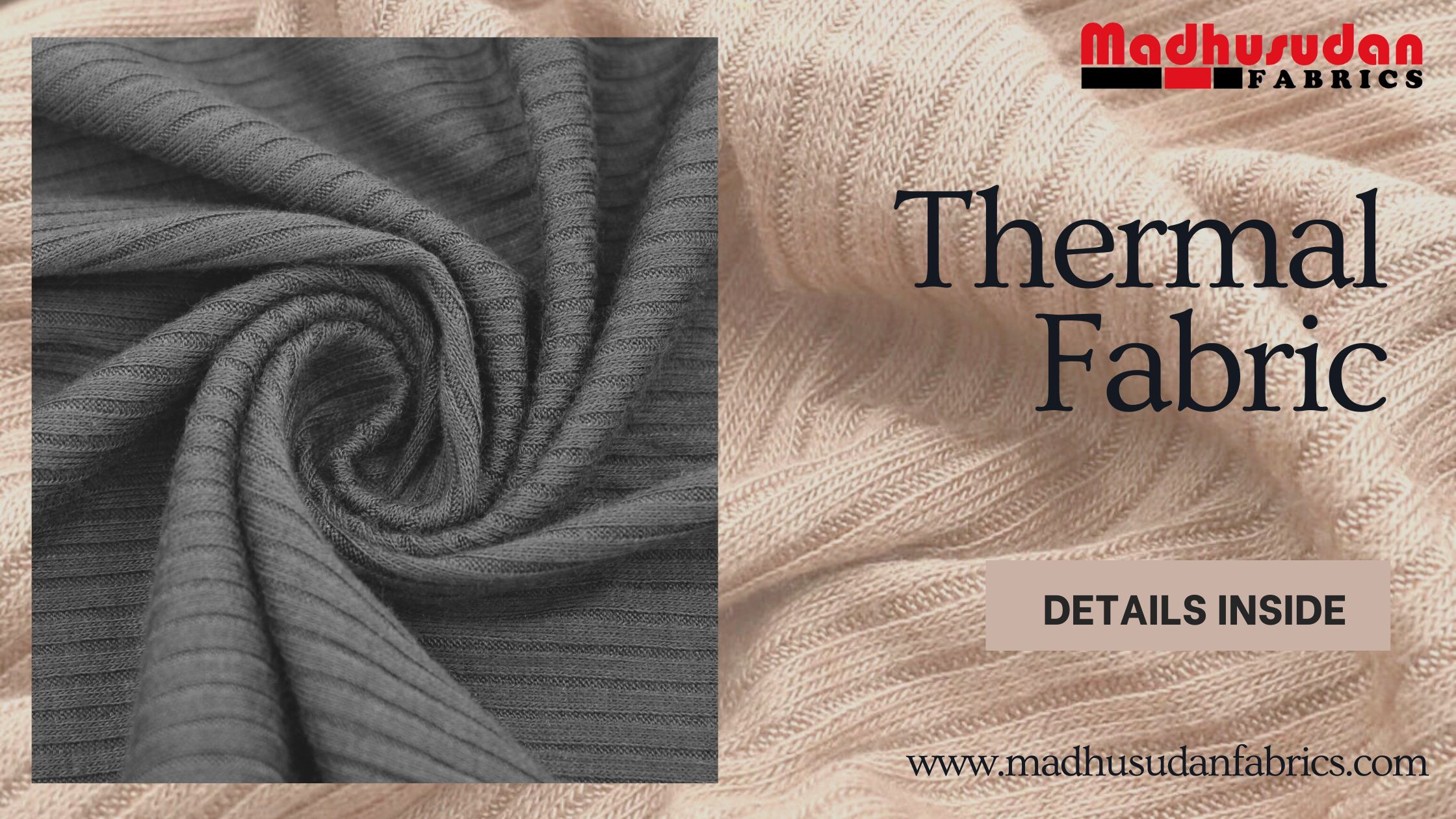Thermal fabric is a type of fabric that is designed to trap heat and keep the wearer warm. It is often made from synthetic fibres, such as polyester and nylon, but it can also be made from natural fibres, such as wool and cotton. Thermal fabric is often used to make garments such as hoodies, jackets, sweaters, and socks.
Properties of thermal fabric
Thermal fabric is characterized by several unique properties, including:
- Warmth: Thermal fabric is designed to trap heat and keep the wearer warm. This is because the fabric is made from a high percentage of synthetic fibres, which are good at trapping heat.
- Breathability: Thermal fabric is also a breathable fabric. This means that it allows air to circulate through the fabric, which helps to prevent the wearer from overheating.
- Wicking: Thermal fabric is also a wicking fabric. This means that it absorbs moisture away from the skin and transfers it to the surface of the fabric, where it can evaporate. This helps to keep the wearer dry and comfortable.
- Durability: Thermal fabric is a durable fabric that can withstand repeated wear and tear.
- Easy care: Thermal fabric is easy to care for. It can be machine-washed and dried in a low-heat setting.
Applications of thermal fabric in garment manufacturing
Thermal fabric is often used to manufacture a variety of different garments, including:
- Hoodies: Hoodies are a popular type of garment that is made from thermal fabric. Hoodies are warm and comfortable, and they are also very stylish.
- Jackets: Thermal jackets are another popular type of garment that is made from thermal fabric. Thermal jackets are warm and lightweight, and they are perfect for wearing in a variety of different weather conditions.
- Sweaters: Thermal sweaters are a warm and comfortable type of garment that is perfect for wearing in the winter months.
- Socks: Thermal socks are a warm and comfortable type of sock that is perfect for wearing in cold weather.
In addition to these garments, thermal fabric can also be used to manufacture a variety of other items, such as gloves, hats, and scarves.
Tips for manufacturing garments with thermal fabric
When manufacturing garments with thermal fabric, it is important to keep the following tips in mind:
- Choose the right type of thermal fabric: There are a variety of different types of thermal fabric available, each with its own unique properties. It is important to choose the right type of thermal fabric for the garment that you are manufacturing. For example, if you are manufacturing a body warmer, you will want to choose a type of thermal fabric that is soft, warm, and breathable.
- Use the right sewing machine: Thermal fabric can be a bit tricky to sew, so it is important to use a sewing machine that is powerful enough to sew through the fabric easily. It is also important to use the correct needle and thread for the fabric.
- Be careful not to overstretch the fabric: Thermal fabric is a stretchy fabric, but it is important to be careful not to overstretch the fabric when sewing. Overstretching the fabric can cause the fabric to lose its shape and elasticity.
- Use the correct finishing techniques: Thermal fabric can be finished using a variety of different techniques, such as hemming, serging, and binding. It is important to use the correct finishing techniques for the garment that you are manufacturing.
By following these tips, you can manufacture high-quality garments with thermal fabric.
We hope this information is helpful for garment manufacturers who are considering using thermal fabric for their products.

